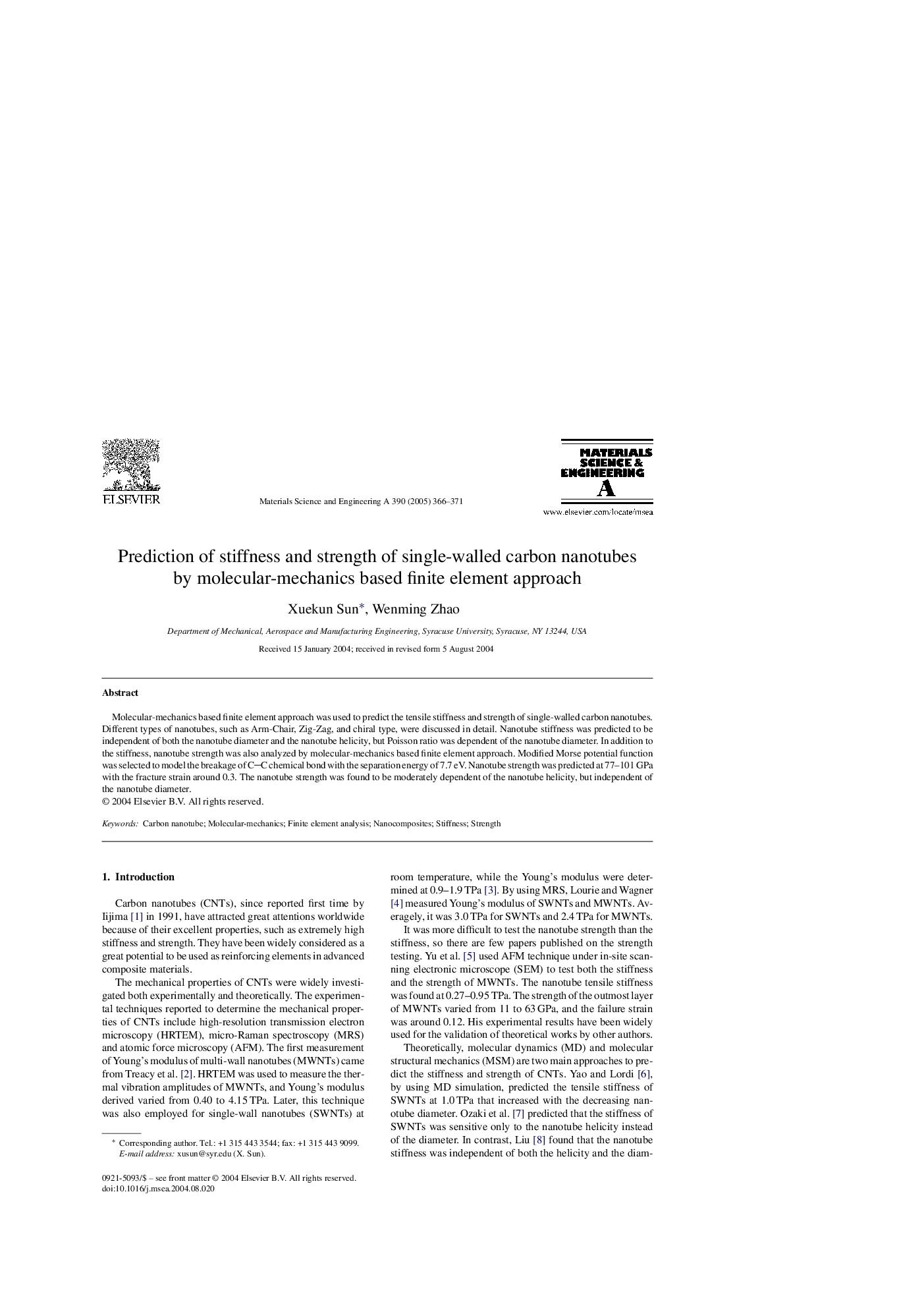| Article ID | Journal | Published Year | Pages | File Type |
|---|---|---|---|---|
| 9796692 | Materials Science and Engineering: A | 2005 | 6 Pages |
Abstract
Molecular-mechanics based finite element approach was used to predict the tensile stiffness and strength of single-walled carbon nanotubes. Different types of nanotubes, such as Arm-Chair, Zig-Zag, and chiral type, were discussed in detail. Nanotube stiffness was predicted to be independent of both the nanotube diameter and the nanotube helicity, but Poisson ratio was dependent of the nanotube diameter. In addition to the stiffness, nanotube strength was also analyzed by molecular-mechanics based finite element approach. Modified Morse potential function was selected to model the breakage of CC chemical bond with the separation energy of 7.7Â eV. Nanotube strength was predicted at 77-101Â GPa with the fracture strain around 0.3. The nanotube strength was found to be moderately dependent of the nanotube helicity, but independent of the nanotube diameter.
Related Topics
Physical Sciences and Engineering
Materials Science
Materials Science (General)
Authors
Xuekun Sun, Wenming Zhao,
